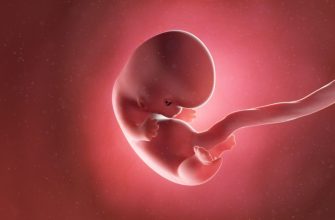In the weeks leading up to a baby’s arrival, the mother’s body prepares for the delivery of her child through a series of physiological changes. In the final stages, contractions in the uterus send signals to the brain that it is time for the birth. While delivering a child may not be easy, it is straightforward, biologically speaking. A woman’s body has everything she needs to ensure her baby’s safe arrival. For nine months, she has been getting to know her baby through sonograms and fetal movements. Delivery day allows mother and child to finally meet face-to-face.
The Baby Enters the Pelvis
When the cervical tissue thins and the cervix becomes dilated to 10 centimeters, the expectant mother has reached the second stage of labor. It is time for the baby to be born. At this point, she may feel some burning near the perineum. Most babies enter the pelvis with the head facing to one side. They then rotate to face downward, toward the small of the mother’s back. Delivery presentation is the baby’s position as it comes down the birth canal. About 97% of babies are in the cephalic, or head-down position, the optimal position for childbirth.
The Urge to Push
Soon after the cervix is completely dilated, the mother will feel a strong urge to push. Pushing moves the baby through the birth canal, under the pubic bone, and out the vaginal opening. The past 20 years have seen differences in medical opinion regarding if a woman should start pushing immediately after she has reached 100% dilation, regardless of whether the urge has begun. Some researchers theorize that this approach is harmful to both mother and child. However, a 2018 clinical trial showed women who pushed immediately upon full dilation delivered about half an hour faster than those who waited to do so.
What the Urge to Push Feels Like
A woman’s body signals her when it is time to push. Most feel pressure or pain in the rectum or vagina, which some women say is similar to the need to have a bowel movement. Many women feel a sudden burst of energy during this time as well. Pushing feels much better than not doing so at this point. Around 8% of women feel the urge to push before being fully dilated. Birthing attendants may encourage these mothers to use breathing techniques to curb early urges. Pushing too soon can cause cervical swelling and delay delivery.
Pushing After Epidural Analgesia
About half of the women who go through childbirth decide on an epidural, the most common anesthetic for labor. The mother-to-be can begin the epidural at any time during labor, and it takes about 10 to 20 minutes for pain relief to be felt after insertion of the epidural. She remains alert and awake throughout the birth [of] baby, feels the pressure and the contractions so that she knows when to push, and can push effectively, but she does not feel any pain. According to the American Society of Anesthesiologists, there is no credible research indicating a slower progression of labor or a higher risk of C-sections due to epidural administration.
Effective Pushing
The delivery team encourages the mother to bear down and concentrate on pushing. Generally, there are three to four pushing efforts lasting six to eight seconds with each contraction, then the woman rests between contractions. Some women are more comfortable in a squatting position, while others prefer sitting, kneeling, or lying back. The mother needs to remain calm during the pushing phase and choose the position she finds most comfortable. This is a time when a birth partner or doula can be very helpful.
Delivery Times
Delivery typically takes from 20 minutes up to two hours but the times vary widely. Some babies are born within minutes of full cervical dilation. Other new arrivals take their time. A general rule of thumb is that mothers who have previously given birth usually experience shorter deliveries with second or third children, pushing for around two hours or less. First-time mothers, on average, push for no more than three hours before the baby delivers, although some deliveries do last longer.
Crowning and Delivery
As the baby reaches the mother’s vaginal opening, the head extends back so that it can rotate under and around the pubic bone. The baby crowns, which means the head shows in the vaginal opening. The birth attendants may determine that the mother requires an episiotomy, a vertical or angled incision that widens the vaginal opening during childbirth, though these were far more common in the past than today. A final push delivers the newborn. As the physician or midwife supports the emerging head, the baby naturally turns to one side. The doctor suctions amniotic fluid, mucus, and blood from the baby’s nose and mouth. Contractions continue, and the top shoulder appears from under the pubic bone. Once the shoulders are delivered, the rest of the infant’s body delivers easily.
Cutting the Umbilical Cord
After the baby is born, the doctor clamps, then cuts, the umbilical cord, leaving a stump that dries and falls off between five to 15 days later. Doctors generally wait for five minutes following the birth to clamp and cut the cord. A study published in the Journal of Pediatrics confirmed the theory that delaying the cord-cutting by five minutes not only has positive effects on the newborn brain, but it also results in increased levels of ferritin, the storage proteins for iron.
Third Stage: Delivering the Placenta
Once she delivers the baby, the new mother will experience contractions again between five and 30 minutes later that help separate the placenta from the uterine wall and move it down towards the vagina. Delivering the placenta is the third and final stage of birth. Chills and shakiness are common during this stage. After placenta delivery, the birthing process is over. The physician or midwife will examine the mother to assess any vaginal tears and determine if stitches are necessary. If there was an episiotomy, physicians will repair it at this time.
Interesting Statistics About Birth
Using data from the US Social Security Administration and the Centers for Disease Control, analysts found that historically, there are more babies born in September than there are in January. Around 60% of babies are born during the day, between 6 a.m. and 6 p.m., with a large spike at 8 a.m. Additionally, a 2015 study states that an individual’s birth month could have an impact on the diseases they will develop during their lifetime.

 Home
Home Health
Health Diet & Nutrition
Diet & Nutrition Living Well
Living Well More
More




















